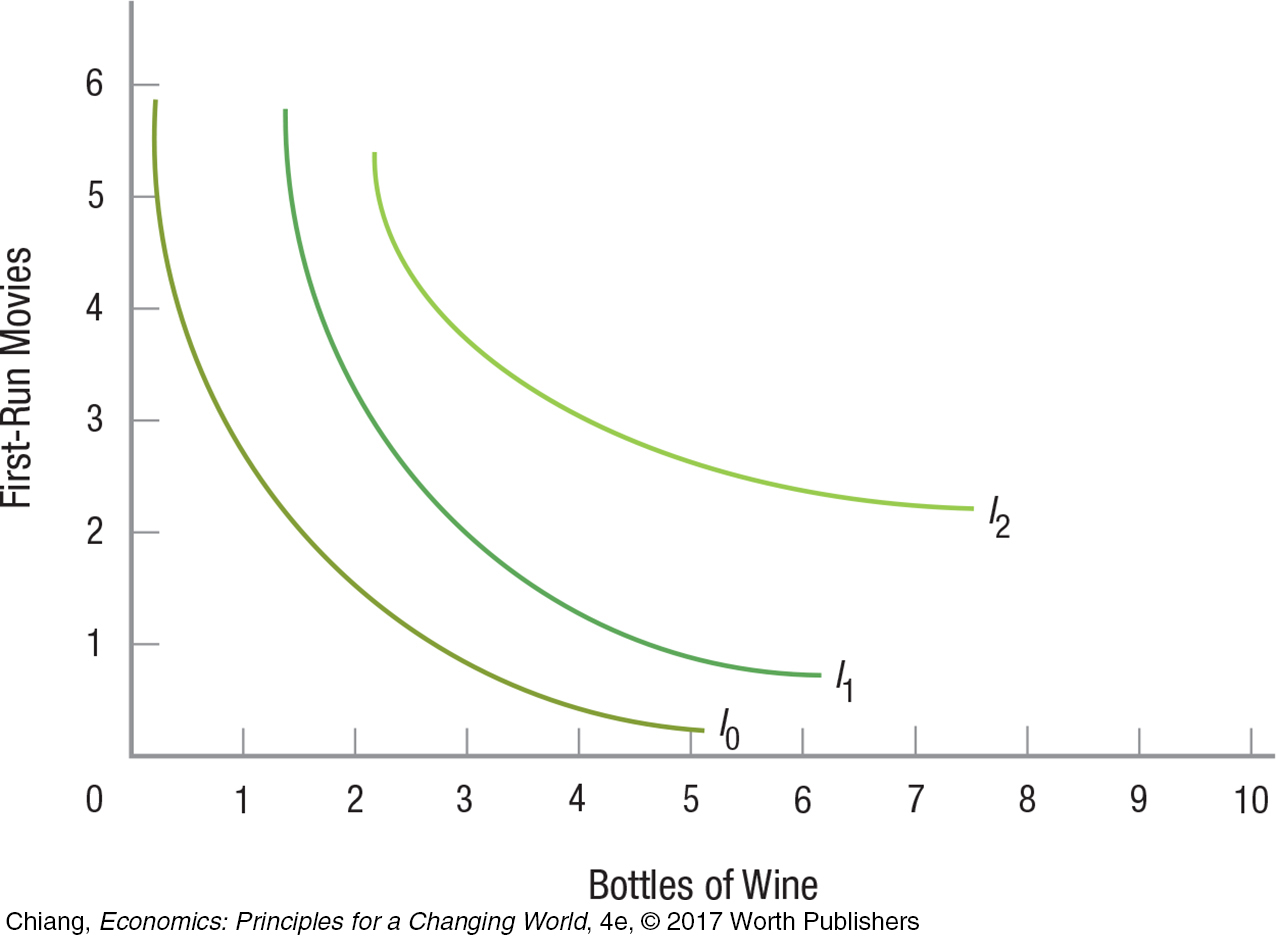APPENDIX QUESTIONS AND PROBLEMS
Indifference curves cannot intersect. Why not?
Explain why the following bundles of apples (A) and bananas (B) cannot be on the same indifference curve: (4A, 2B); (1A, 5B); (4A, 3B).
Answer the following questions using the figure below:

Assume that you have $50 a month to devote to entertainment (First-
Run Movies) and wine with dinner (Bottles of Wine). What will be your equilibrium allocation if the price to see a movie or buy a bottle of wine is $10? Graph the equilibrium on the figure and label it point a. A grape glut in California results in Napa Valley wine dropping in price to $5 a bottle, and you view this wine as a perfect substitute for what you were drinking. Now what will be your equilibrium allocation between movies and wine? Graph that on the figure and label the new equilibrium as point b.
Some economists have suggested that terrorists are not spurred by poverty, but rather are educated individuals who live in countries with a lack of civil liberties. As such, terrorists are rational actors who maximize a set of goals subject to constrained resources.
Assume that terrorists can choose between nonviolent acts and violent acts. Draw a budget line and indifference curves that show where a utility-